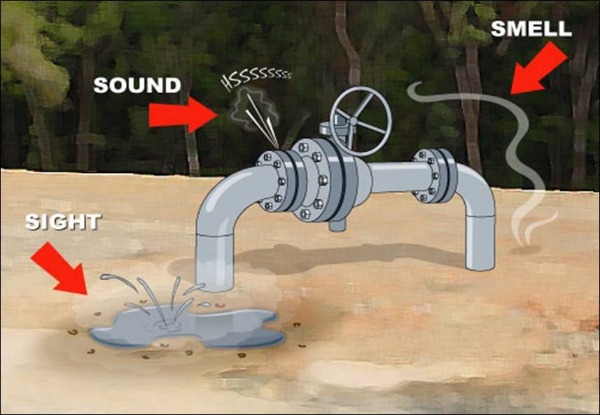Recognizing A Leak
Natural gas is transported in its gaseous form by pipeline from wells and processing facilities to distribution centers (or distribution pipeline systems). Natural gas is odorless, colorless, tasteless and nontoxic in its natural state. When transported via transmission pipelines, natural gas typically does not have odorant added. An odorant is added when it is delivered to a distribution system.
Natural gas liquids (NGLs) are liquids separated from natural gas and include propane, butane and ethane. These products are commonly used for cooking and heating, and are the building blocks for manufacturing thousands of products we use every day. They are easily liquefied under pressure and normally will not have odorant added when transported via transmission pipelines.
Petroleum liquids is a broad term covering many products, including: crude oil, gasoline, diesel fuel, jet fuel, fuel oil, and other refined products. Odorant is not added to these products because they have a natural odor.
